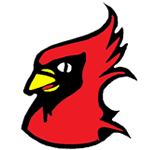Literacy
Literacy-Reading
The literacy curriculum at Cardinal Forest includes instruction that support students’ development in the domains of Communication, Reading, Writing and Research. Literacy instruction is taught and reinforced through direct teaching, modeling, guided practice, coaching, and independent practice. Teachers plan a balance of learning experiences using a variety of reading genres and forms of writing. Additionally, teachers support the use of literacy strategies across content areas and integrate the curriculum as appropriate.
Here are some fun and easy ways to support the literacy learning that happens at school.
Read Aloud
Read aloud to your child for 15 minutes every day, even with your 4th, 5th, and 6th graders! Not only is reading aloud to your child a great bonding activity it also helps expand their vocabulary, models fluent reading, builds comprehension, establishes a love of reading, and exposes children to a variety of authors, texts, and genres.
Fluency
In order to understand what they read, children must be able to read fluently when reading aloud or silently. Fluent readers read in phrases, use expression, and stop or pause appropriately at punctuation. Fluent reading is smooth and sounds like talking. To help your child build their fluency skills you can:
- Read aloud to your child and have them match their voice to yours.
- Reread favorite poems and stories.
- Read aloud to your child to model fluent reading.
- Practice reading a passage or short story with a certain emotion, such as sadness or excitement, to practice expression and intonation (the rise and fall of the voice in reading and speaking).
- Practice making reading sound like talking when reading aloud easier books.
Comprehension
Comprehension means understanding and interpreting what is read. It involves combining reading with thinking and reasoning. Here are some ways you can help your child build their comprehension skills:
- Read aloud to your child to build their vocabulary. A large vocabulary helps make comprehending easier.
- Read in short sections. Stop and talk about what happened before moving on.
- Help your child make connections between what he or she reads and similar experiences he has felt or read in another book.
- Ask probing questions about what you are reading.
- I wonder why that girl did that?
- How do you think he felt? Why?
- What lesson can we learn?
- Would you have made the same decision? Why or why not?
- Discuss the meaning of unknown words.
- Help your child go back to the text to support their answers.
Phonics and Decoding
Phonics teaches the principles of letter-sound relationships, how to sound out words, and exceptions. Decoding is the ability to apply your phonics knowledge to correctly pronounce written words. The relationship between phonics and decoding allows children to quickly recognize familiar words and figure out words they have not seen before. Here are some ways to help your child develop their phonics and decoding skills:
- Play with magnetic letters – put them in alphabetical order, say their sounds, name the letters.
- Look around your house, in the neighborhood, and in your community for familiar words and letter patterns.
- Write notes, e-mails, and letters representing each sound your child hears as they write.
- Look at all the letters in a word, not just the first one or two when sounding out words.
- Practice finding “sight” or “snap” or “high frequency” words in books, magazines, newspapers, etc.
Word Study
Word study provides children with opportunities to investigate and understand the patterns in words. It is designed to build word knowledge that can be applies to both reading and writing through spelling. Word study develops children’s’ abilities in phonics, word recognition, and vocabulary. To help your child develop their word study skills you can:
- Look for the word patterns being studied in their reading, online, around the house, in the neighborhood, and in the community.
- Play word games, such as Scrabble, Boggle, Hangman, Crossword Puzzles, Mad Libs, etc.
- Look for ways words are alike and different.
- Work/play with words to make new words.
- Look for smaller words in bigger words.
- Add or delete a letter(s) to make other words.
- Make a chain of words by changing one letter at a time. (ex. Nose – note – not – tot – tote)
Writing
Writing is a way for readers to express their thoughts, creativity, and uniqueness. It is a fundamental way in which learn to organize their thoughts. When engaging in writing, children often mirror what they see around them: adults writing lists, emails, texts, social media posts, etc. Some writing activities that can be done at home include:
- Write instructions for taking care of a family pet.
- Write a letter or thank you note to a relative or friend.
- Make a shopping list.
- Make a chores/to do list.
- Write an online review for a recent purchase.
- Keep a personal diary.
- Write on fun paper, with fun pens and markers, or sidewalk chalk.
Literacy Websites
Here is a list of fun, educational websites to play at home.
- Starfall
- DOGOnews
- How stuff works
- KidzSearch – a one stop shop with the best free websites
- PBS Kids

